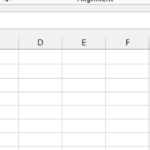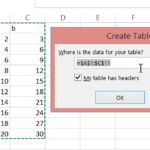Performing Polynomial Regression in Excel
Performing polynomial regression in Excel involves fitting a polynomial equation to a set of data points. Unlike linear regression, which is straight-line fitting, polynomial regression fits a curve, making it suitable for more complex relationships between variables. Here’s how you can perform polynomial regression in Excel:
Step 1: Organize Your Data
Arrange your independent variable (X) data in one column and your dependent variable (Y) data in an adjacent column. For clarity, label the columns X and Y.
Step 2: Insert a Scatter Plot
- Select your data.
- Go to the Insert tab.
- Choose Scatter from the Charts group.
- Click on the Scatter plot without lines.
Step 3: Add a Trendline
- Click on any data point in the scatter plot. This action selects all data points.
- Right-click and select Add Trendline.
- In the Format Trendline pane, scroll down and select Polynomial.
- Specify the order of the polynomial. The order (degree) depends on how many bends you need in your curve. For example, a 2nd-degree polynomial (quadratic) will have one bend, a 3rd-degree will have two, and so on.
- Check the Display Equation on chart and Display R-squared value on chart options to view the polynomial equation and the R-squared value directly on your chart.
Step 4: Analyze the Results
The polynomial equation and R-squared value will now be displayed on the chart. The equation will have the form y = ax^n + bx^(n-1) + … + zx^0, where n is the degree of the polynomial.
The R-squared value indicates how well the polynomial equation fits your data. An R-squared value closer to 1 suggests a better fit.
Step 5: Predicting Values
To use the polynomial equation for predictions, input the equation into an Excel cell, replacing x with the cell reference containing the value for which you want to predict y.
For complex polynomials, consider using the LINEST function for more precision in coefficients calculation. This function is more advanced and requires setting up an array formula to handle polynomial coefficients.
Step 6: Refining the Model
Experiment with different polynomial degrees to find the best fit for your data. Be cautious of overfitting, where a higher-degree polynomial fits the training data well but performs poorly on new data.
Review the scatter plot visually to ensure the polynomial curve reasonably follows the trend in the data.



